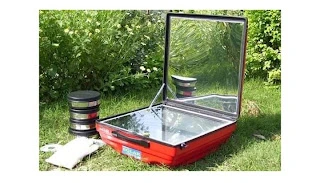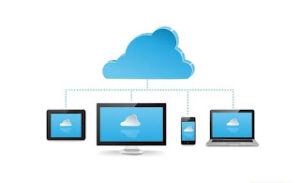Many believe that solar energy was used in the ancient Greek, Roman and Chinese civilizations. But cooking using the energy of the sun has never been heard of. In 1767, a Swiss gentleman named Horace-Benedict de Sousseur produced the first academic description of the solar-powered stove system.
Saucior was a geologist, meteorologist, physicist and alpine climber. He built a small device to harness the power of sunlight. At that time many scientists were working on converting solar energy into thermal energy. Most of them dealt with the technique of heating a specific point with a mirror. Sauciore, on the other hand, was working on the ability of glass to retain heat.
Saucior’s device is said to be the oldest human-made solar cooker. Saucior’s oven has a lot in common with the box solar ovens we see at the moment.
He placed 5 glass boxes one inside the other. Then place the whole thing on a piece of black wood. After several hours in the sun, the temperature inside the box reached 190 degrees Fahrenheit (88 degrees Celsius). Saussure used this box to boil fruit. However, solar cooking was most widely practiced by the French army in the 1870s.
Solar ovens began as scientific experiments in the 18th century. Everyone wanted to see why and how sunlight accumulates in glass and creates heat. And now this strategy is playing a leading role in eradicating hunger and disease in some of the world’s most impoverished regions.
In modern times, solar cooker cooking was developed around the 1950s, but did not become popular. Many blame the United Nations’ wrong marketing techniques and exaggerated claims for this.
With the right equipment, much heat can be generated by harnessing the energy in the sun’s rays. So hot that it is possible to fry food in oil. Almost anything a stove or oven can do, a solar cooker can do. The difference is, this stove uses natural and pollution-free fuel, which costs no money to buy.
In this article we will try to understand how sunlight is converted into heat. We will learn about different types of solar cookers, try to know how they work. We will also talk about how solar cookers can save lives in different parts of the world despite some limitations.
So let’s get to the main topic: How does sunlight or electromagnetic radiation turn into heat?.
Cooking With Light
With stove and oven we can cook meat, vegetables, pulses, rice, bread, fruits. We can boil, steam, fry, burn. We can do all these things with solar oven. But here sunlight is used instead of gas or electricity.
Sunlight itself is not hot or has no heat inside it. It is radiation or light waves—essentially energy generated from variations in electric and magnetic fields. When light waves hit the molecules of your skin, your skin feels warm. This same thing happens in solar ovens. There is a type of solar cooker called box cooker, which can generate a lot of heat with sunlight.
Simply put, sunlight energy is converted into heat energy, when the photons (particles of light) in the light wave collide with molecules of something. Electromagnetic radiation emitted from the Sun contains a lot of energy. When this beam falls on an object, be it solid or liquid, the energy causes the molecules of that object to vibrate. As the molecules vibrate, they become excited and begin to jump. This is how heat is generated. Solar ovens can use this heat in two ways.
1. Box Cooker
Box cooker is a common type of solar cooker. This 3-5 feet long cooker is actually a solar powered oven. There is a closed box, which is heated by sunlight. This heat accumulates inside the box.
The best known is the box cooker, which consists of a box with an open top. The inside of this box is painted black. And above the box is a piece of glass or transparent plastic. Sometimes there are multiple reflectors inside the box. A reflector is a flat surface made of mirror or metal. These reflectors are mounted outside the box. Their function is to reflect excess sunlight inside the glass.
For cooking, you have to put the food bowl inside this box and place the whole box in sunlight. The food bowl will be placed on top of the black painted floor of the box. When sunlight enters the box through the glass top, the light waves will reflect on the black bottom of the box and the bottom will become extremely hot.
We know that darker colors absorb more heat. That is why the inside of the box is painted black. The molecules the box is made of are excited by the heat. Due to this more heat is generated. In this way, heat accumulates inside the box and starts heating up. Just as food can be cooked in a normal oven, this solar oven can also be cooked in the same way. A box cooker can reach temperatures of up to 300 degrees Fahrenheit (150 degrees Celsius). And this temperature is enough to cook food safely.
2. Parabolic Cooker
Parabolic or elliptical cookers can heat up more than box cookers. It can reach temperatures of up to 400 degrees Fahrenheit (204 degrees Celsius), making it easy to fry or make bread.
The design of this type of cooker is a bit complicated. Here, a lot of sunlight is concentrated into a small area with curved reflector surfaces. It then works much like a stove or oven. This cooker is quite large, sometimes up to several feet long. There is a space between the curved reflectors. The food container should be kept in this place. The pot is slightly above the bottom of the cooker and that is where all the light is concentrated. That tiny spot gets so hot and the molecules start to vibrate so much that the heat wave travels up and heats the bottom of the dish.
Parabolic cookers and box cookers are both quite large in size. As a result, it is difficult to move around with them. Again box cookers are quite heavy in weight as they are made of glass.
.
There are also panel cookers, which have a parabola-shaped reflector placed over a box-shaped oven. These cookers are relatively small and light. While cooking, cookware is kept in a plastic bag. This traps heat inside the bag (as seen in box cookers). People use these cookers while camping.
But it would be a mistake to think that the real use of solar ovens is only when camping. The real use of this hearth is associated with relief from poverty, hunger and disease.
How Cooking With Sunlight Can Help Us
1. Cooking Facility With Sunlight Energy
There are billions of people around the world who do not have enough fuel to cook food. Far from having electricity and gas, they have to rely only on coal and charcoal for cooking.
Coal has also become quite expensive these days. As a result wood is the only cheap fuel. Another problem is that many parts of India and Africa do not have enough vegetation. A family needs a lot of wood to cook for the whole day. And because of this, sources of firewood in the world are shrinking day by day.
To collect wood from the forest, each family member has to work for many hours. Many times these poor people have to spend money to buy fuel. As a result, they no longer have enough money to buy food.
2. Solar Cooker To Reduce Diseases
Where nearly one billion people are without a source of safe drinking water, pasteurization is critical. Pasteurization means heating something to such a high temperature that the microorganisms in it are killed.
2 million people die each year from waterborne diseases caused by bacteria. This death can be prevented only by drinking pasteurized water. Besides, it is very important to properly cook meat or vegetables cultivated with contaminated water. Because it can contain harmful bacteria, worms and viruses. And by eating such food hepatitis A, Giardia and E. Coli poisoning can range from life-threatening illness.
Pasteurization does not require much heat. For example, 150 degrees Fahrenheit (65 degrees Celsius) is sufficient for pasteurizing water and 180 degrees Fahrenheit (82 degrees Celsius) for food.
High pasteurization temperatures can easily be reached with simple design solar ovens costing only $10. Again, food is cooked in a few hours in this solar oven. However, the cooking time depends on the type of food and the type of oven being used. The best part is, people no longer have to walk miles to find fuel. They simply put the stove outside the house, and use the sun’s heat—that too for free. A solar panel can thus stop burning about 1 ton (0.9 metric tons) of firewood in a year.
3. Solar Cooker To Reduce Air Pollution
Solar stoves can relieve us of another drawback of burning wood. Air pollution occurs when wood is burned. Wood burning smoke contains many tiny particles, which are harmful to the environment. Those who breathe such air suffer the most. When people cook on such open stoves indoors, numerous tiny particles enter the body with their breath. These can lead to various health problems including heart and lung diseases.
According to a study, about 1.5 million people die every year due to such air pollution. When solar ovens are used, there is no need for such open furnaces. Then the air is also free of pollution.
While solar cookers seem like a great solution for many developing countries, they have some problems. The main problem here is the use of sunlight that makes solar ovens so useful. The use of such stoves is possible only in a few countries in the world, those countries where the climate is dry and sunny for at least half of the year. Some areas in Brazil, Kenya, India and Ethiopia have ideal climates for cooking.
But the biggest problem is that many places don’t always get sunshine from the sun. So cooking with a solar oven is not possible at night or on cloudy days. If there is no sun, people will have to rely on firewood. Still, if most of the day’s cooking could be done with sunlight instead of wood, there is no doubt that it would be of great benefit to the energy-starved people.





